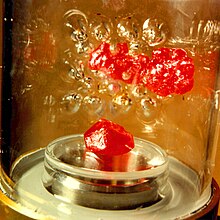
Quick Facts

Biography
Lodewijk van den Berg (Dutch pronunciation: [ˈloːdəʋɛik vɑn dɛn ˈbɛrx]; born March 24, 1932) is a Dutch American chemical engineer, specializing in crystal growth, who flew on a 1985 Space Shuttle Challenger mission as a Payload Specialist.
He was the first Dutch-born astronaut, a fact that is often ignored in the Netherlands because he was a naturalized American and no longer a Dutch citizen at the time of flight. He is married and has two children. As of 2014, he resides in Florida and works as a chief scientist at the Constellation Technology Corporation.
Education and early career
Van den Berg was born on March 24, 1932, in Sluiskil, Netherlands. Van den Berg was educated in the Netherlands where he attended the Delft University of Technology from 1949 to 1961 and earned his Engineer's degree in chemical engineering. He then moved to the United States to continue studying at the University of Delaware, where he obtained a MSc degree in applied science, followed by a PhD degree in 1974, also in applied science.

After he had completed his doctoral study, he was offered a job at EG&G Corporation Energy Measurements in Goleta, California, to work on crystal growth. EG&G was a defense contractor of the United States government and dealt with sensitive information and science. In 1975, this required Van den Berg to become a naturalized U.S. citizen. Van den Berg gathered years of research and management experience in the preparation of crystalline materials—in particular, the growth of single crystals of chemical compounds, and the investigation of associated defect chemistry and electronic properties. He became an international authority on vapor growth techniques with an emphasis on mercuric iodide crystals and its application in the nuclear industry as gamma ray detectors. During his work at EG&G, Van den Berg asked NASA for permission to conduct crystal growth experiments in space, which NASA approved.
Spaceflight
Selection


Van den Berg and his colleagues designed the EG&G Vapor Crystal Growth System experiment apparatus for a Space Shuttle flight. The experiment required an in-flight operator and NASA decided that it would be easier to train a crystal growth scientist to become an astronaut, than it would be the other way around. NASA asked EG&G and Van den Berg to compile a list of eight people who would qualify to perform the science experiments in space and to become a Payload Specialist. Van den Berg and his chief, Dr. Harold A. Lamonds could only come up with seven names. Lamonds subsequently proposed adding Van den Berg to the list, joking with Van den Berg that due to his age, huge glasses and little strength, he would probably be dropped during the first selection round; but at least they would have eight names. Van den Berg agreed to be added to the list, but didn't really consider himself being selected to be a realistic scenario.
The first selection round, consisted of a selection based on science qualifications in the field in question, which Van den Berg easily passed. The final four candidates were tested on physical and mental qualifications which he also passed, while two of the others failed due to possible heart issues. He was now part of the final two, and NASA always trains two astronauts, a prime and a back-up. In 1983 he started to train as an astronaut and six months before the launch he was told that he would be the prime astronaut, much to his own surprise. When he went into space he was 53 years old, making him one of the oldest rookie astronauts.
STS-51B
Van den Berg was assigned as Payload Specialist on STS-51B Challenger (April 29–May 6, 1985). STS-51B, the Spacelab-3 mission, was launched from the Kennedy Space Center, Florida, and returned to land at Edwards Air Force Base, California. It was the first operational Spacelab mission. The seven-man crew aboard Challenger conducted investigations into crystal growth, drop dynamics leading to containerless material processing, atmospheric trace gas spectroscopy, solar and planetary atmospheric simulation, cosmic rays, and laboratory-animal and human medical monitoring.
As a co-investigator of the Vapor Crystal Growth System (VCGS) experiment, Van den Berg was responsible for the crystal growth aspects of the VCGS experiment. He had intimate knowledge of VCGS and Fluid Experiment System (FES) hardware, and had participated in all major design and science reviews of those systems.
By the end of the mission, Van den Berg had traveled over 2.9 million miles in 110 Earth orbits, and logged over 168 hours in space.
Career after NASA
After returning to Earth, Van den Berg continued to work on crystal growth experiments at EG&G in California and he became the head for the section of materials science. At a later time he moved to Florida to become a chief scientist at the Constellation Technology Corporation. At age 72, he continued to work up to 40 hours a week and grow crystals, a process he compares to gardening. The crystals he grows (Mercuric Iodide crystals) are used to make precision detectors for nuclear radiation. These detectors are used in medical applications, by the defense industry and the International Atomic Energy Agency.
He visits the Netherlands every two years, and was the subject of a short 2004 documentary by Netwerk called: The `forgotten astronaut`.
Asteroid
On September 28, 2007 the main belt asteroid 11430 (9560 P-L) was named after him and is now known as 11430 Lodewijkberg. The asteroid was discovered October 17, 1960 by Cornelis Johannes van Houten and Ingrid van Houten-Groeneveld at Leiden Observatory, where they were studying photographic plates taken by Tom Gehrels using the Palomar Observatory's Samuel Oschin telescope.
